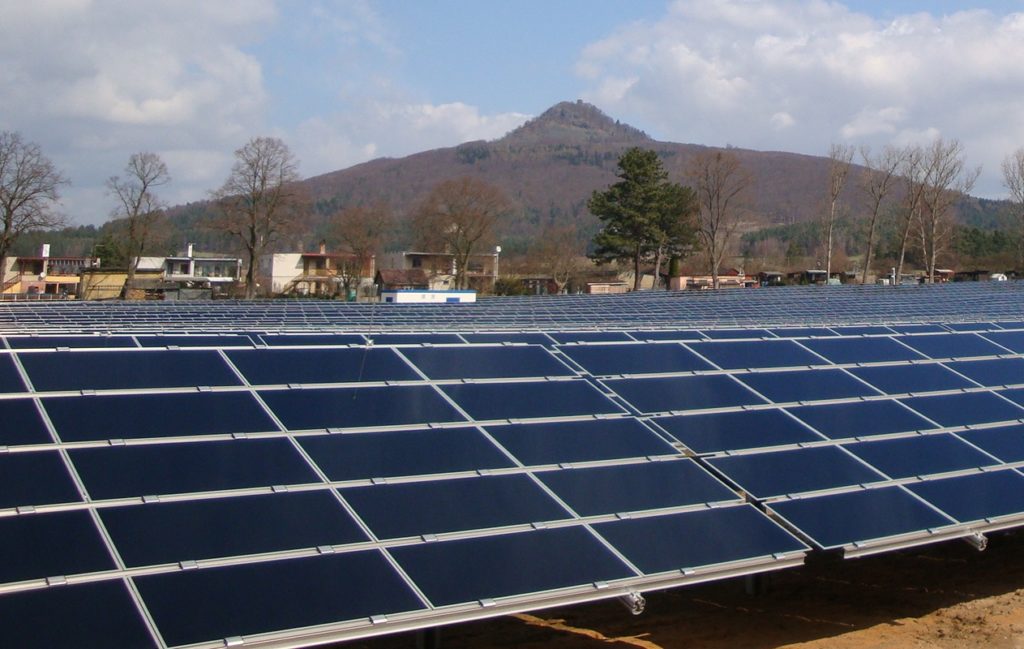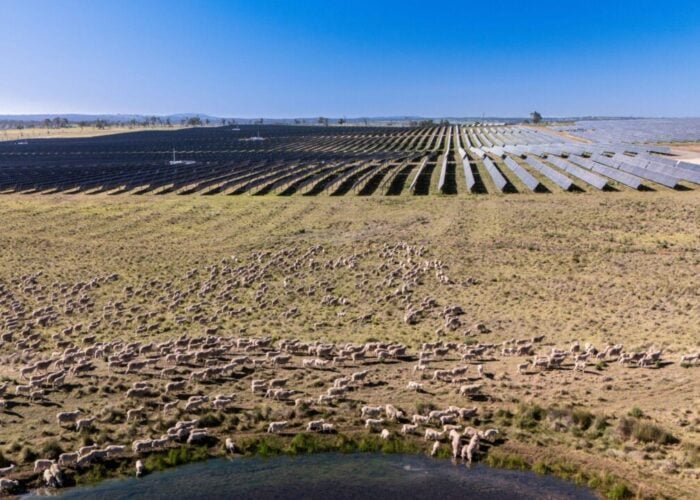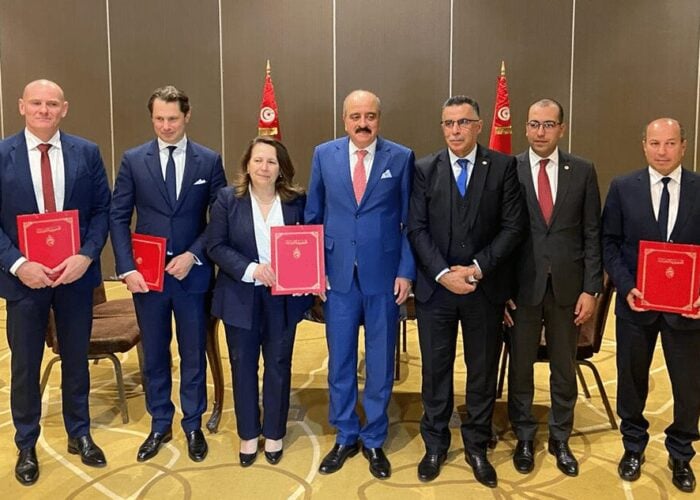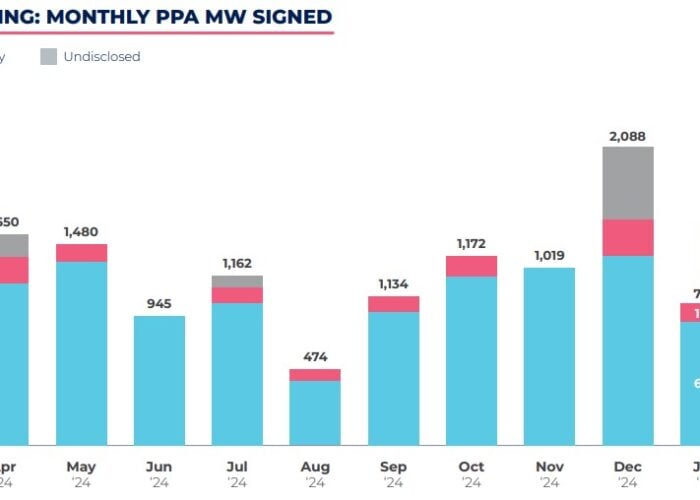
After Actis-backed developer Rezolv Energy announced its acquisition of what it said will be Europe’s largest solar project earlier this month, PV Tech Premium caught up with Rezolv CEO Jim Campion to discuss the unique blend of power purchase agreements (PPAs) on offer, the rising appeal of the Romanian PV market, and the novel attempt to restore degraded agricultural lands on site.
Rezolv already has a strong presence in Romania having recently announced plans for a 450MW onshore wind plant east of Bucharest. The company has another 550MW wind project in the pipeline that has not yet been formally announced, but for which a deal may close before the end of the year, says Campion. These projects have a similar construction timeline to the solar project, meaning that Rezolv could have a formidable installed capacity in Romania of 1GW wind and 1GW solar by 2025.
Unlock unlimited access for 12 whole months of distinctive global analysis
Photovoltaics International is now included.
- Regular insight and analysis of the industry’s biggest developments
- In-depth interviews with the industry’s leading figures
- Unlimited digital access to the PV Tech Power journal catalogue
- Unlimited digital access to the Photovoltaics International journal catalogue
- Access to more than 1,000 technical papers
- Discounts on Solar Media’s portfolio of events, in-person and virtual
Or continue reading this article for free
There are very few European locations that could suit a PV plant of this scale, says Campion, due to the requirements of quality connection, low-cost land and low population density. Hungary and some parts of Greece could have this potential, but this is lacking in Western Europe.
PPA pick ‘n’ mix
Rezolv is in the contracting PPA phase and by including the wind projects, the company can offer what Campion calls “a pick n mix” PPA with some consumers wanting a 50% wind, 50% solar mix. Separate PPAs are required for the two technologies, but this still allows for energy profile blending – particularly if battery storage is involved.
“Some buyers have a preference for wind because it’s closer to a base load profile and some are comfortable with a solar annual profile,” says Campion. “So, when we’re marketing to the big consumers, the big tech companies, the brewers, supermarkets, we actually have both weapons in the chest.”
Some telecommunications operators, for example, are asking for a two-thirds wind and one-third solar PPA.
Campion is confident that lithium-ion batteries will be part of the project, offering several advantages, especially given that grid-balancing costs in Romania are relatively high. For the combined 2GW of wind and solar capacity, batteries could provide such balancing services, whilst also performing load shifting.
“We will be contracting something like 65% of the capacity to long-term PPAs, but we’ll probably keep 30 to 35% merchant,” says Campion. “And that will allow us a certain bandwidth moving from the peak to the profile to reduce the cannibalisation.”
If approved, the storage target is for between 135-250MW of battery capacity capable of delivering electricity for between two to four hours.
Romania’s appeal
For solar developers, Romania benefits from covering a large geographic area with competitive land and service costs and without high population density. It is also one of the bigger markets in terms of population as compared to its neighbours Hungary and the Czech Republic. Campion is also complimentary about the way the Romanian network operator Transelectrica has handled grid applications, which has given confidence to investors that once a grid connection is secured that a project can reach full completion.
With more than €800 million (US$824 million) of investment in the 1GW project, Campion says that the project returns are reasonable given the various risks taken – particularly on the logistics side.
Rezolv, which was launched earlier this year by Actis, decided to focus on three main markets – Romania, Bulgaria and the Czech Republic – which all have a similar recent history in renewables. Feed-in-tariffs (FiTs) and certificates were dropped resulting in very few projects of any substance being built in the last decade. This left a vacuum to be filled as soon as solar reached grid parity with power prices rising and PV technologies costs reducing.
These Eastern European markets also happen to be more carbon intensive than Western Europe, says Campion, so deploying renewables here is more effective at displacing carbon-intensive energy production than setting up another offshore wind farm in the UK, Denmark or the Netherlands, for example.
“There’s a little bit of a bounce back on costs, for obvious reasons, because the capex has gone up substantially in the last year or so,” adds Campion. “The cost of debt is probably our biggest in terms of our levelised cost of energy and is increasing, but the power prices are still likely to be high enough for the long term to support these investments.”
Romania’s power prices have also been marginally higher historically than other western markets like Germany and the US, but it’s not clear if these prices will continue as the penetration of renewables increases.
Sheep per megawatt
The flat project site covers more than 1,000 hectares of land that was historically used as pasture, but this was converted into arable land that has been damaged by intensive farming with pesticides and fertilisers. With the land degrading significantly over time, Rezolv plans to restore the land back to a healthy pasture so that even after the 25-40 year PV project has concluded, the land will have been regenerated.
It’s a complex process because it is important to grow the right grass species for grazing sheep while accounting for density, rainfall and making sure sheep are available at the right time. This has led to the company making ‘sheep per megawatt’ calculations. Campion says around half of solar projects in Romania already use agrivoltaics with sheep grazing techniques.
“It’s a win-win because cutting the grass on 1,000 hectares is a big piece of work,” he adds. “So, we’re able to manage a large portion of that through grazing and return the land to as it was as pasture.”
Bees will also be cultivated in attempts to improve the biodiversity of the land, which has been diminished by 30 years of monoculture.
Rezolv also has programmes for local employment and aims to diversify the workforce with women, which Actis has already achieved successfully in Africa-based projects.
“This is Europe’s biggest solar site, maybe for many years, so it will be very much in the headlights,” says Campion. “It’s a double-edged sword. You get the value of these big projects, you get the scale, but you have to make sure you do things right from the off as well.”
Four logistics angles
Having considered both fixed-tilt installs and trackers for the project’s 1.8 million PV modules, the wind loads at this very flat site make a fixed solution the preferred option at present. Due to the sheer size of the orders, Campion says that Rezolv will likely source from two or three suppliers rather than one large contract with a single supplier. The project’s make-up allows for a modular install that may also result in a phased build.
The project is a “major logistics challenge” says Campion. Unlike most Romanian renewable energy projects on coastal areas by the Black Sea, this project is tucked up on the north-western border of Romania in an agricultural hub near the town of Arad. This makes the land cheap but hard to access.
The four-pronged approach to delivering the modules and equipment includes: use of a major rail hub currently under construction in the region, delivering direct to Constanța on the Black Sea coast then sending on via train to Arad, travelling up the Danube River or crossing overland from Croatia.
Besides logistics, there is also a flood risk of one in 50-100 years, which can see some areas of the site rise by 1 metre, however, the company is designing the electrics to stay protected and possibly remain functional during such a flood.
The future
Rezolv hopes to be able to start construction in late Q2 next year and there is also scope for expansion of the capacity, which may involve buying more land.
Campion says that taking part in Romania’s contracts for difference programme, which starts in 2023, may be an option, but so far the project has run on the assumption of being financed through PPAs.
He predicts that Rezolv’s wind and solar additions will be a major shift for Romania’s energy system, adding close to 8% of the current power mix. It will also mark a major shift for the utilities where they are being challenged by private capital building assets “to some degree bypassing the classic utility model”.
Campion hopes that other developers will flock to Romania, taking advantage of the relative ease of building solar as compared to wind. However, he warns: “We do see a lot of low-quality development where it’s been a land grab. [The developers] haven’t really looked at all the conditions and local engagement.”
There are also constraints on finding grid connections in the right locations. Nonetheless, there is a burst of activity in Romania at present and PV projects offer a relatively low threshold for developers at medium scale as there are fewer requirements.
Forecasting ahead, Campion says: “I can see visibility for something like 6GW of additional RE in Romania in the next seven to ten years.”







